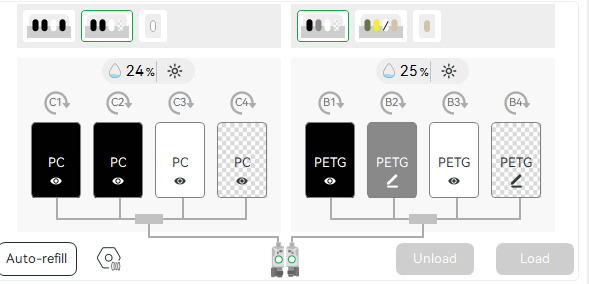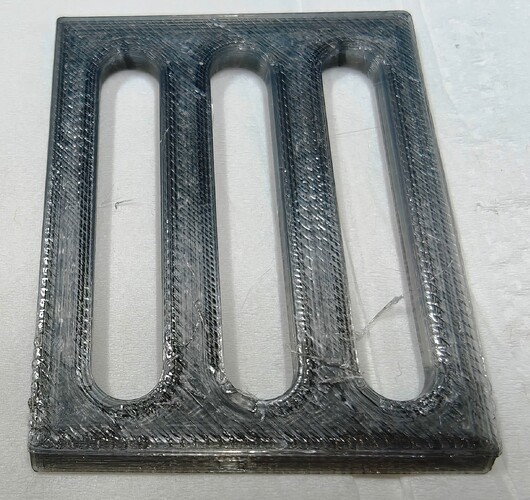What are people using as a cut-off on replacing desiccant/drying filaments aside from when the print quality deteriorates? I’m respectful of not drying filament too frequently but I’m seeing moisture levels increase in my AMS2’s and wondering about cut-off/tradeoffs. Advice please
I use round hygrometers for this function in my AMS1’s as they are slow to respond. So I get a very rough indication everytime I walk past my AMS and know that if it reads 1% above its minimum (10% in my case), that the dessiccant can no longer keep the moisture down.
Just don’t fill the hygrometer holders with dessiccant ![]()
Thanks EnoTheThracian. Maybe not at 11%, but if you were slack like me and saw it get to 25%, would you just replace the dessicant or also dry the filaments; given the PC filament in C2 just produced this part? (It’s approx. 40x50mm)
Well, at 11% for the slow hygrometers (the AMS integrated ones are too fast to ise this method reliably), I know I should dry the dessiccant in order to avoid having to redry the filament.
But… that is what I should do. I am not very good with should ![]()
With PLA and PETG sitting in the AMS, I do have to admit that after the initial drying, I only re-dry if and when:
- I get moisture typical defects (curling is a good early indicator)
- I did take the rolls out of the AMS and had them sitting openly for quite a while (days for filled or speciality PLA & PETG, 1-2 weeks for PLA Basic)
- I re-use a roll which I had packed in a sealed pack with dessiccant and there are a few saturated dessiccant pearls visible)
As for PC, that is unfortunately not my forte.
I would probably try do re-dry, just to rule that out as a root cause, re-calibrate Flow and Flow Dynamics and try a further print at reduced velocity to see if the failures improve. Maybe also with concentric surfaces to get a smoother nozzle movement and less pull-out.
![]() &
& ![]()
Good advice. Sometimes, I get too close to it all and need a fresh perspective (like this). Thank you.

